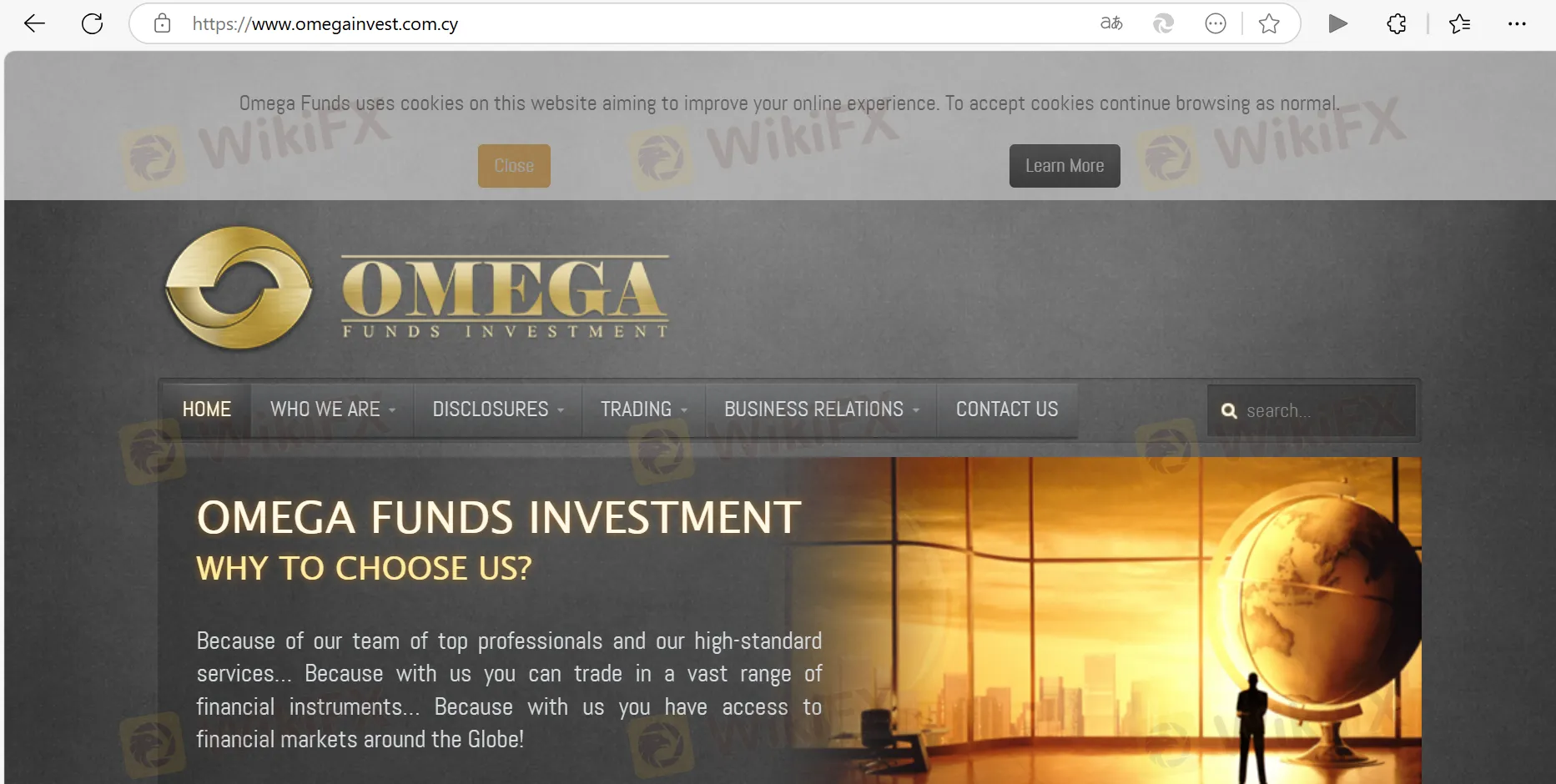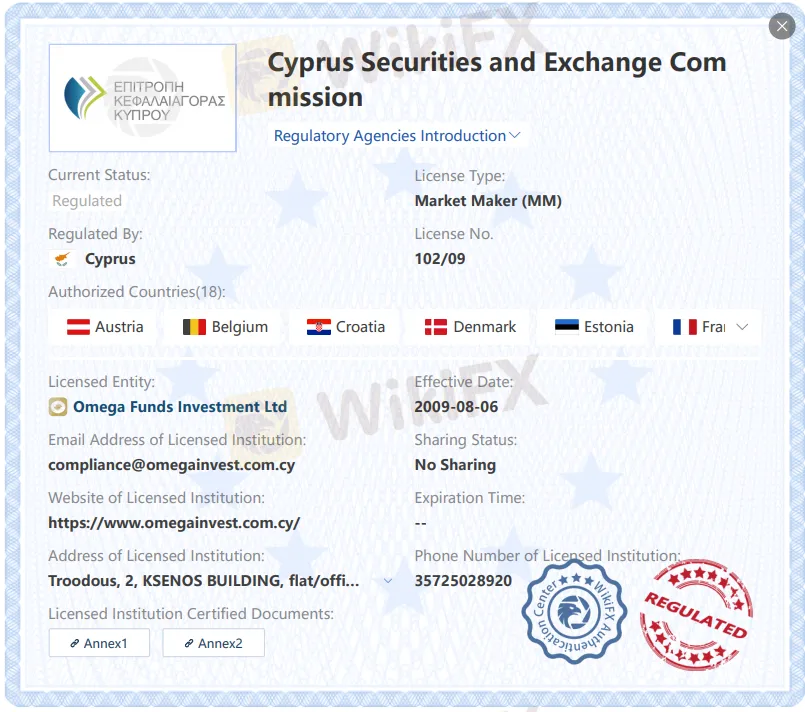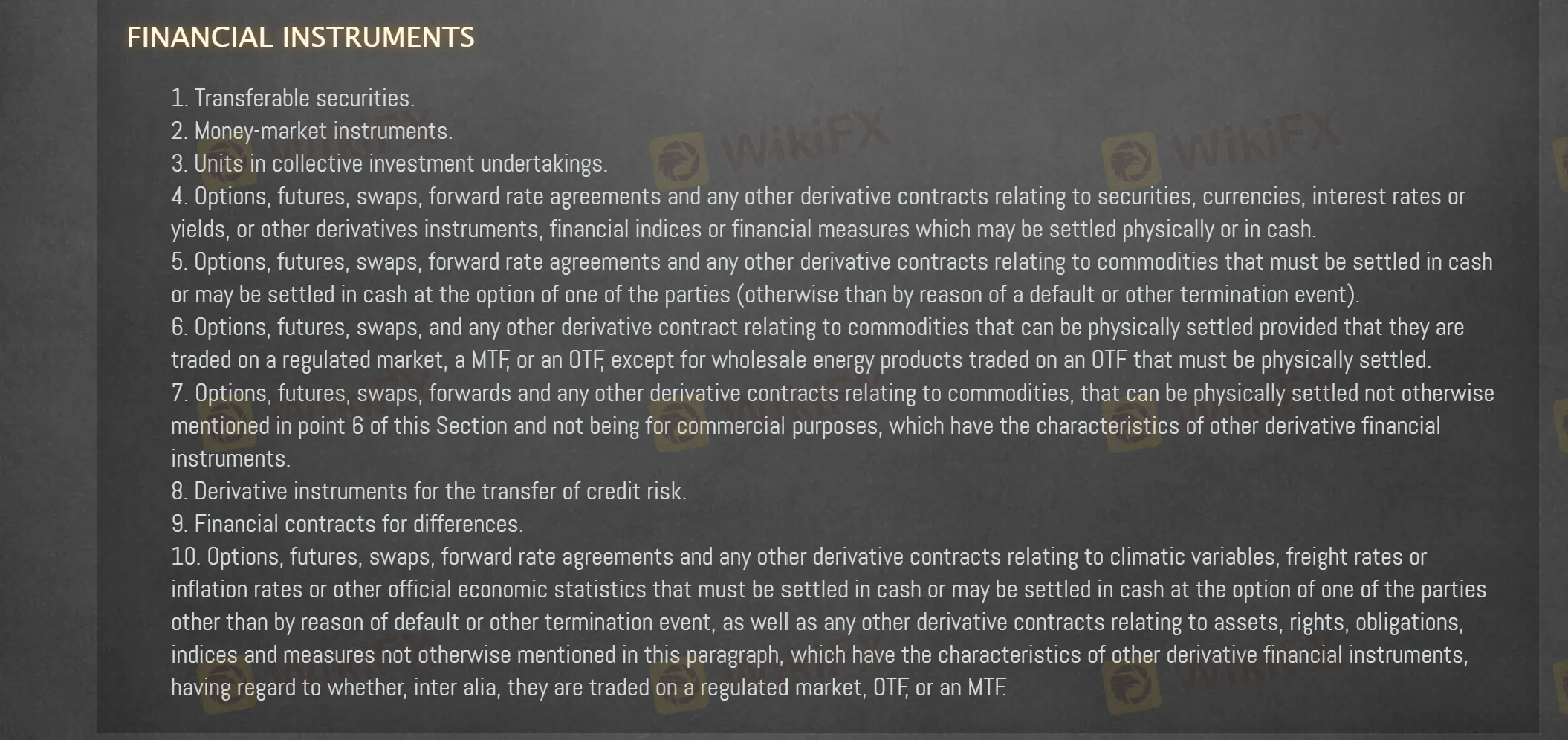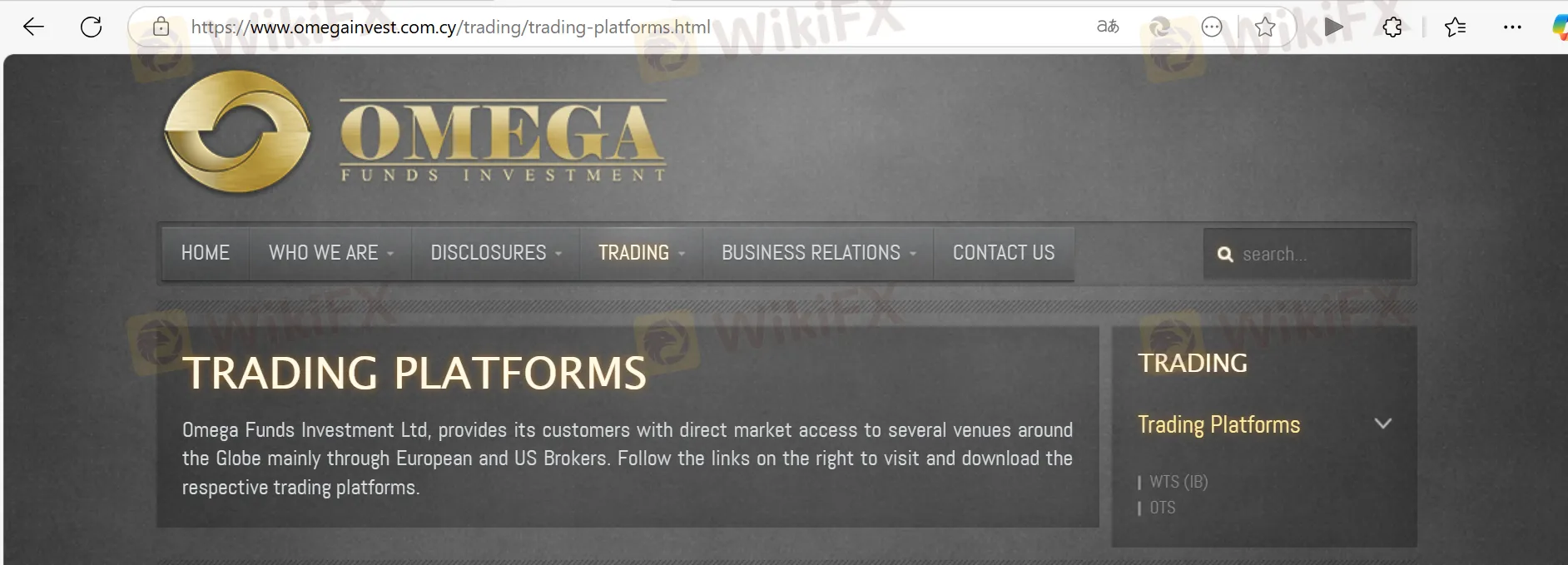基礎資訊
 賽普勒斯
賽普勒斯天眼評分
 賽普勒斯
|
15-20年
|
賽普勒斯
|
15-20年
| https://www.omegainvest.com.cy/
官方網址
評分指數
影響力
D
影響力指數 NO.1
 加拿大 2.40
加拿大 2.40 監管資訊
監管資訊持牌機構:Omega Funds Investment Ltd
監管證號:102/09
單核
1G
40G
1M*ADSL
 賽普勒斯
賽普勒斯 omegainvest.com.cy
omegainvest.com.cy 賽普勒斯
賽普勒斯




| OMEGA 評論摘要 | |
| 成立年份 | 2008 |
| 註冊國家/地區 | 塞浦路斯 |
| 監管 | CYSEC監管 |
| 市場工具 | 證券、貨幣、期權和期貨 |
| 模擬帳戶 | / |
| 槓桿 | / |
| 點差 | / |
| 交易平台 | WTS(IB)和OTS交易平台 |
| 最低存款 | / |
| 客戶支援 | 傳真:+357 25028929 |
| 電話:+357 25028920 | |
| 電郵:info@omegainvest.com | |
| 地址:4105, 塞浦路斯, 利馬索爾, 阿吉奧斯阿塔納西奧斯, Troodous街2號, Ksenos大廈, 202室 | |
OMEGA 是一家於2008年成立的受監管經紀商。OMEGA在塞浦路斯註冊,受CYSEC監管,提供投資服務、附屬服務以及在WTS(IB)和OTS平台上的金融工具。

| 優點 | 缺點 |
| 監管良好 | 沒有MT4/MT5平台 |
| 營運時間長 | 監管地址與實際地址不符 |
| 多元的聯絡渠道 | 有限的交易條件資訊 |
| 多樣化的服務和產品 |
OMEGA Funds Investment Limited受CySEC監管,持有市場製造(MM)許可證編號102/09。
| 監管國家 | 監管機構 | 當前狀態 | 受監管實體 | 許可證類型 | 許可證編號 |
| 塞浦路斯 | 塞浦路斯證券交易委員會(CySEC) | 受監管 | Omega Funds Investment Ltd | 市場製造商(MM) | 102/09 |

WikiFX 實地調查團隊訪問了OMEGA在塞浦路斯的地址。我們發現其實際地址與監管地址不符。請注意風險!

經紀商提供投資服務、附屬服務和金融工具,如證券、貨幣、期權和期貨。
| 交易資產 | 支援 |
| 證券 | ✔ |
| 貨幣 | ✔ |
| 期權 | ✔ |
| 期貨 | ✔ |
| 大宗商品 | ❌ |
| 指數 | ❌ |
| 股票 | ❌ |
| 加密貨幣 | ❌ |
| 債券 | ❌ |
| ETFs | ❌ |


Omega為不同客戶群體提供定制的帳戶類型:零售客戶、專業客戶或合格對手方。但具體的帳戶功能尚未公開。

OMEGA為其客戶提供兩個不同的交易平台:WTS (IB)和OTS。
| 交易平台 | 支援 |
| WTS (IB) | ✔ |
| OTS | ✔ |



Having traded independently for over a decade, I’ve learned to approach any broker with careful scrutiny, especially where my funds and data are concerned. With OMEGA, a few points stand out. The broker is regulated by CySEC in Cyprus and has been operating for more than 15 years, which does provide a measure of credibility and stability compared to unregulated entities. I do value regulatory oversight because it generally means some level of investor protection and accountability, but Cyprus regulation is not viewed as strict as some of the more established regulators in other jurisdictions. That said, my caution is heightened by WikiFX’s note regarding a mismatch between OMEGA’s regulatory and actual business addresses—a factor that can signal administrative inconsistencies or insufficient transparency. For me, physical transparency is important as it reflects a broker’s genuine intention to serve clients rather than avoid oversight. Additionally, OMEGA does not offer popular trading platforms like MT4 or MT5, only supporting WTS (IB) and OTS, which could complicate seamless integration with my existing workflows or trading tools. There’s also limited information available publicly on spreads, leverage, or trading conditions, making it difficult for me to fully evaluate the broker’s costs and suitability for my strategies. In my experience, while OMEGA’s long regulatory track record and product diversity (currencies, options, futures, and securities) are pluses, the combination of a suspicious business scope alert and lack of transparency in core trading details does make me hesitant. Personally, I would not commit significant capital until I had greater clarity and had directly tested their platforms and support. For those who value security and openness as highly as I do, proceeding cautiously and continuing to monitor for updates is prudent.


In my detailed research on OMEGA, I found that the broker does not disclose specific details regarding leverage for major forex pairs or other asset classes. This lack of transparency is concerning to me, as leverage policies critically impact both potential profits and, more importantly, the risks traders assume. With OMEGA being regulated by CySEC, my expectation would be that leverage should align with European Union requirements—typically, this means a maximum of 1:30 for retail clients trading major FX pairs. However, since OMEGA offers different account categories such as Retail, Professional, or Eligible Counterparties, it's possible that higher leverage could be available for those who qualify as professional clients, though again, these terms are not detailed. For me, the absence of clear leverage information, especially regarding instruments beyond forex like options and futures, significantly limits my confidence in fully evaluating their risk environment. I strongly believe that understanding leverage terms—and how they might differ across asset classes—is essential for prudent risk management, especially when considering a broker flagged for having a suspicious business scope and high potential risk by industry watchlists. Until OMEGA publicly outlines their leverage conditions for each asset type, I would remain cautious and thoroughly seek clarification from their support before considering opening an account.


Having traded with a variety of brokers over the years, I always pay special attention to account types and how transparently they’re presented. With OMEGA, while it’s clear that accounts are tailored for three groups—Retail Clients, Professional Clients, and Eligible Counterparties—the lack of detailed information on specific account features stands out to me. For me, this makes it challenging to make a direct, informed comparison between the accounts, especially compared to brokers that layout minimum deposit requirements, spreads, leverage, or specific benefits for each tier upfront. This limited transparency requires a cautious approach. I know from my experience that understanding precise account parameters—like trading costs or margin requirements—is essential for effective risk management and strategy planning. OMEGA does specify that it’s regulated by CySEC and that it offers standard financial instruments, which provides some reassurance about oversight, but without clear account specifics, I feel obligated to treat the offerings conservatively. In summary, while the segregation into client categories suggests an attempt to meet varying trader needs, the lack of public detail means, for me, that I would need to directly contact OMEGA or request further documentation to make any meaningful account comparison—and I'd be careful before making any commitments.



Based on my thorough review of the available information about OMEGA, I was unable to find any mention of inactivity fees or the specific circumstances under which such charges might apply. As a trader who has evaluated many brokers over the years, I know that details on fees—especially less obvious ones like inactivity fees—can significantly impact a trading experience and the overall cost of maintaining an account. Often, reputable brokers will clearly outline potential charges in their account terms or fee schedules. In OMEGA’s case, the lack of transparency regarding trading conditions, including fees, stands out for me as a point of caution. In my own practice, I always seek full clarity on fee structures before committing to a broker, as hidden fees can erode profits over time. While OMEGA is regulated by CySEC, which usually imposes certain standards for disclosure, I could not locate any direct answers about inactivity fees from the publicly available materials. Without explicit confirmation, I would avoid making assumptions and instead recommend contacting OMEGA’s customer support directly for clarification before opening an account. Taking this cautious approach is, in my experience, essential when dealing with any potential unknowns, particularly with financial service providers.



請輸入...